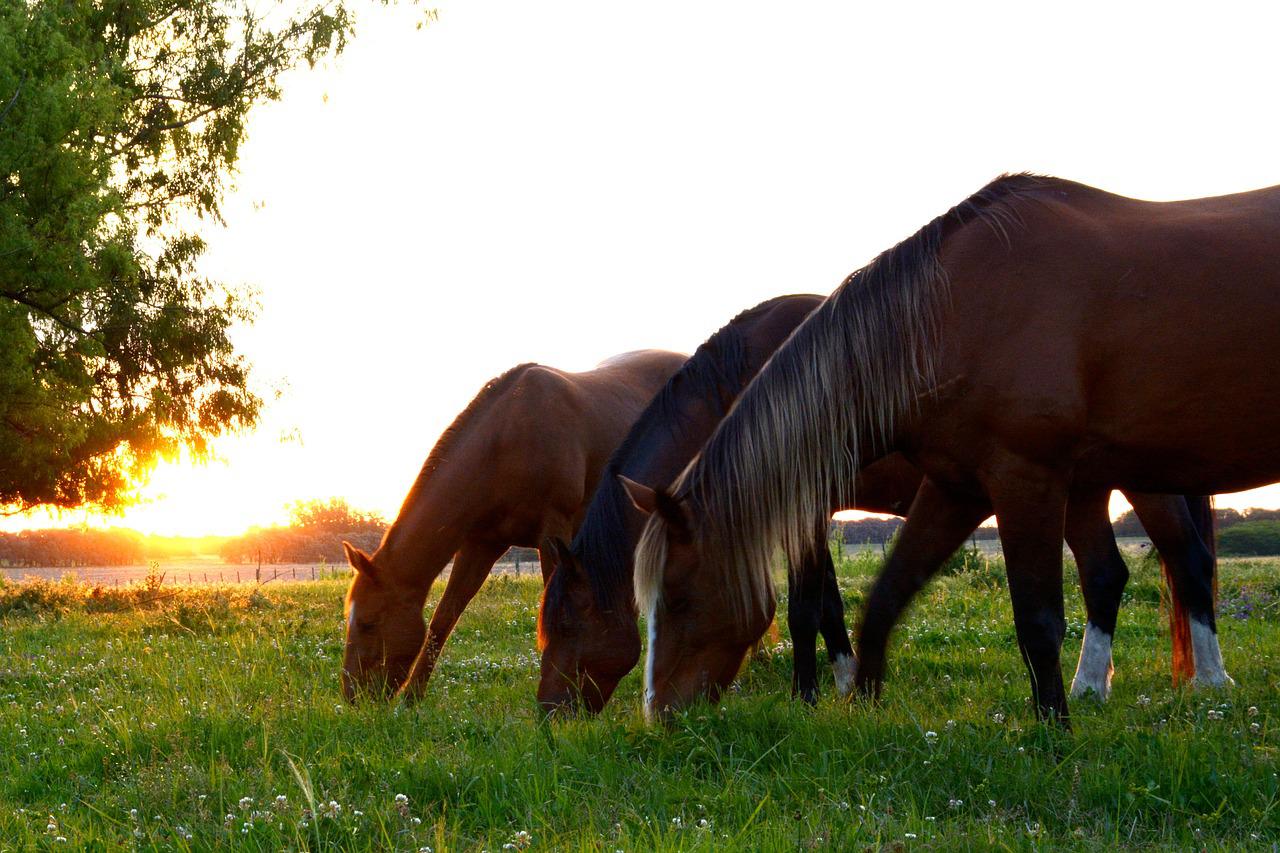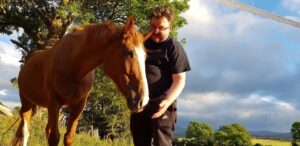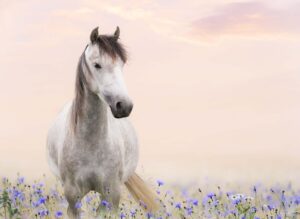During the Summer months of 2022, we have seen global temperature rises, most notably in the UK, Europe and North America. This increase in temperature and drought directly impacts the welfare of both equines and equine caregivers/riders.
The Equine Academy Course Providers have offered their top tips to manage your equine in the heat.
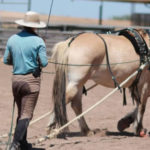
Train or ride in the morning
Cori is based in Arizona, USA, where Summer temperatures regularly top 40 degrees. Cori recommends working in the early mornings, saying “It is always cooler in the morning than in the evening however, if you must work late in the day, it is best to do so after 5pm when the angle of the sun is lower, and the heat is starting to fade. If you have shade to work in, use it! Keep working sessions short and less intense to prevent overheating, and be sure both you and your horse stay hydrated. Keep a trough in the corner of the arena so your horse can signal if they need a drink, and you can allow them the opportunity during breaks.
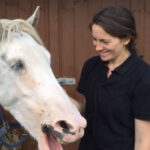
Alternative to riding
A great chance to do 2×10 mins in hand work a day rather than ride. Slow postural work in walk in any shady bit of the yard working on having a low soft neck. Walking and halting together effortlessly, single backing up steps and walking straight with the head gently bent towards you. All low impact low effort heat friendly exercises.
Also if you do “have to ride” pre-wet your horse with a good soaking on their neck, chest and shoulders can help them stay a little cooler

Keep sessions short
Short sessions don’t just apply to your horse; remember, you’re human! Consider the light; bright sunlight in the eyes can cause glare effects and headaches; wear a hat and sunglasses.
Set realistic expectations in the intense heat; avoid dehydration and exhaustion by hydrating before you undertake any yard work. Try and keep sessions down to 30 mins or less. Take regular breaks. Plan to get work done either early morning or later in the evening when it is cooler where possible.

Consider the materials
When working, in-hand or riding, in the heat, consider the materials of your bridle and saddle pad or other equipment. For example, metal components on can become hot in direct sunlight. Keeping tack out of the sun and in a cool room can reduce the risk of burns for you and your horse. If your horse is sweaty under their noseband, headpiece or chin strap, lambswool is proven to offer optimum sweat absorption and is a breathable material. If you don’t already have a sheepskin material on your noseband or headpiece, pick up a removable sheepskin noseband cover, which can be applied to various straps and washed in between use. The use of sheepskin can also reduce rubbing, especially if your bridle doesn’t have much padding.
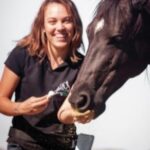
Hydrate the hooves
Ditch the expensive hoof oils and moisturisers, instead opting to create a hoof soaking station. How to make: your station doesn’t need to be fancy! Create one with four poles and a tarp with clean water. These work just as well as those created with cement. Soak the hooves for 15-30 mins or select an area the horse goes to multiple times per day.
As an extra idea, I like to create a splash pool – an area filled with water where they can splash in or roll in, and cool off.
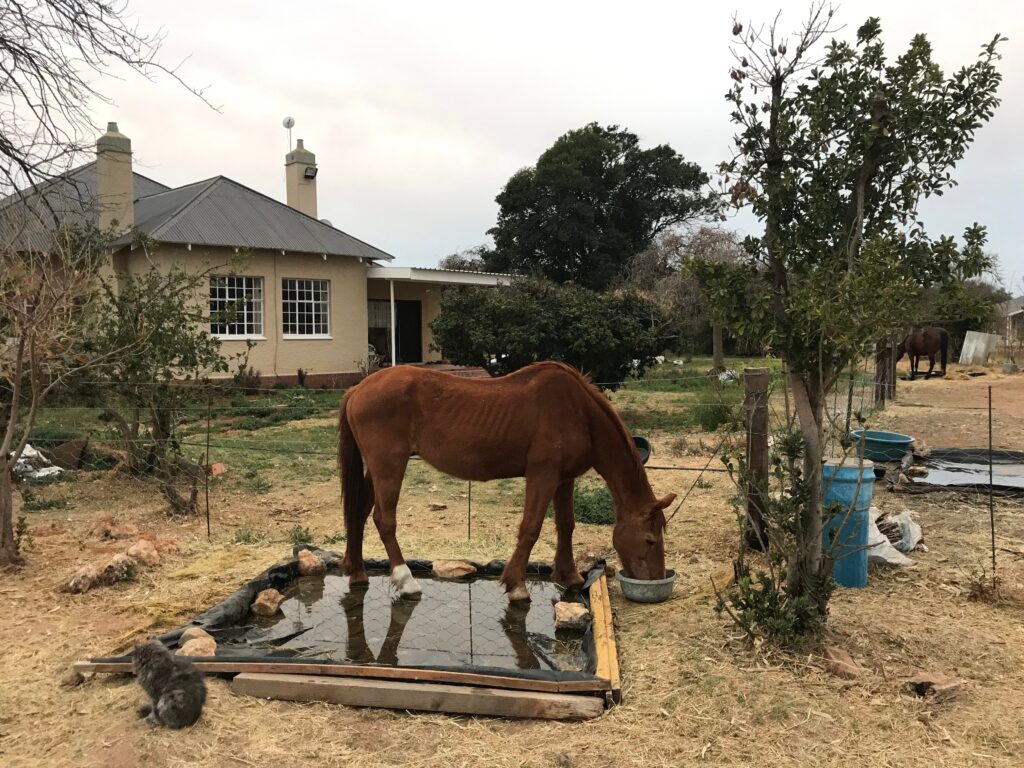
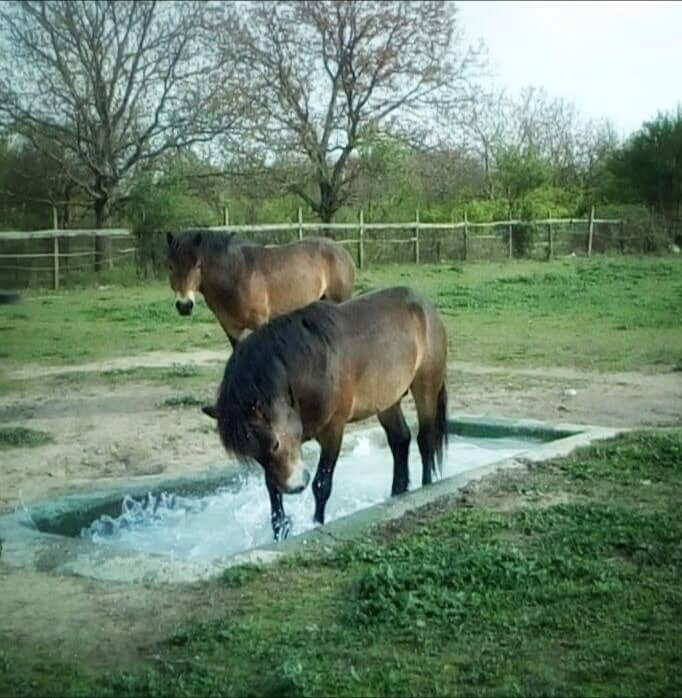
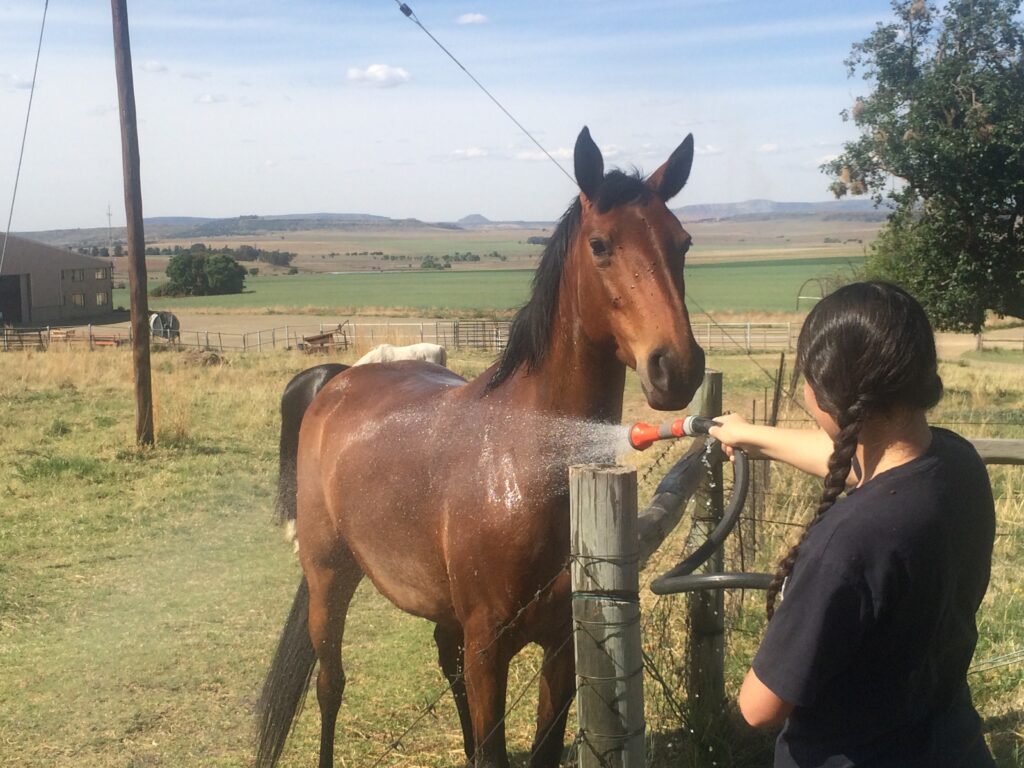

Get creative with water
- Hose down; Sponge or hose the equines 2-3 times a day. Wet fly masks or rugs if you must have them. There is no need to scrape down afterwards.
- Water: Make sure there is fresh AND salted water available around the clock. Remember that horses don’t drink sips all day like humans, they often have 2 or 3 larger drinks per day so don’t panic if you don’t SEE than drink. Make sure to scrub troughs out as algae build up fast when the sun hits them.
- Teas: Consider cooling herbal teas such as mint, self-heal or chickweed as my favourite as they will help the body dispel head. Grab enough fresh plants to just cover the bottom of a bucket. Pour on a kettle of boiling water, leave until cool. Top up with cold water (remove the plants and add to the muck heap) and serve.
Create a Temporary Shelter
From Amelia Phillips
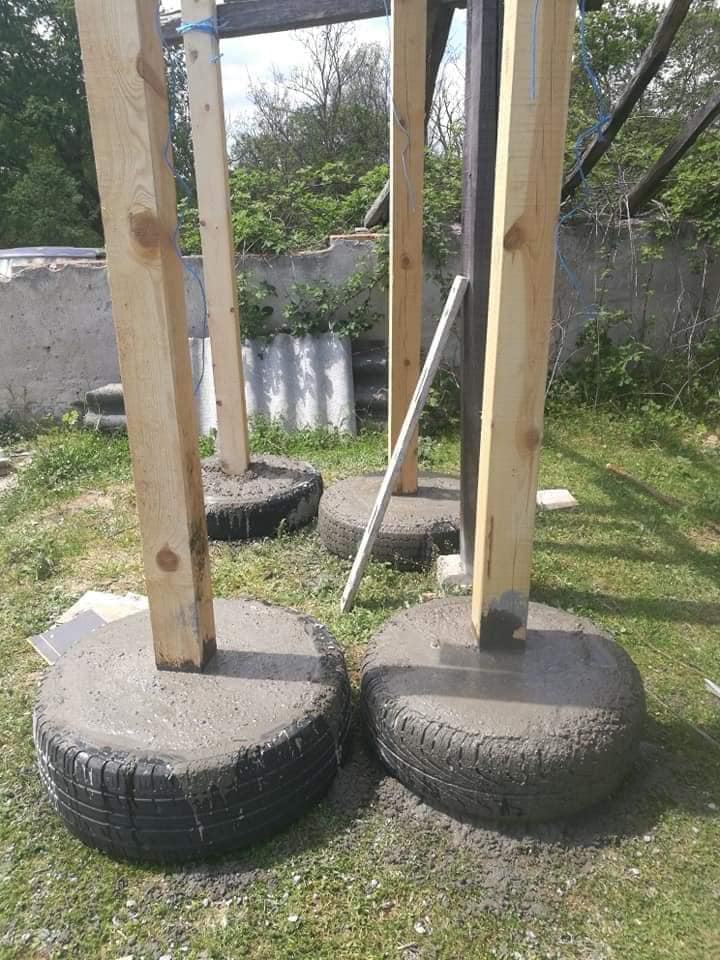

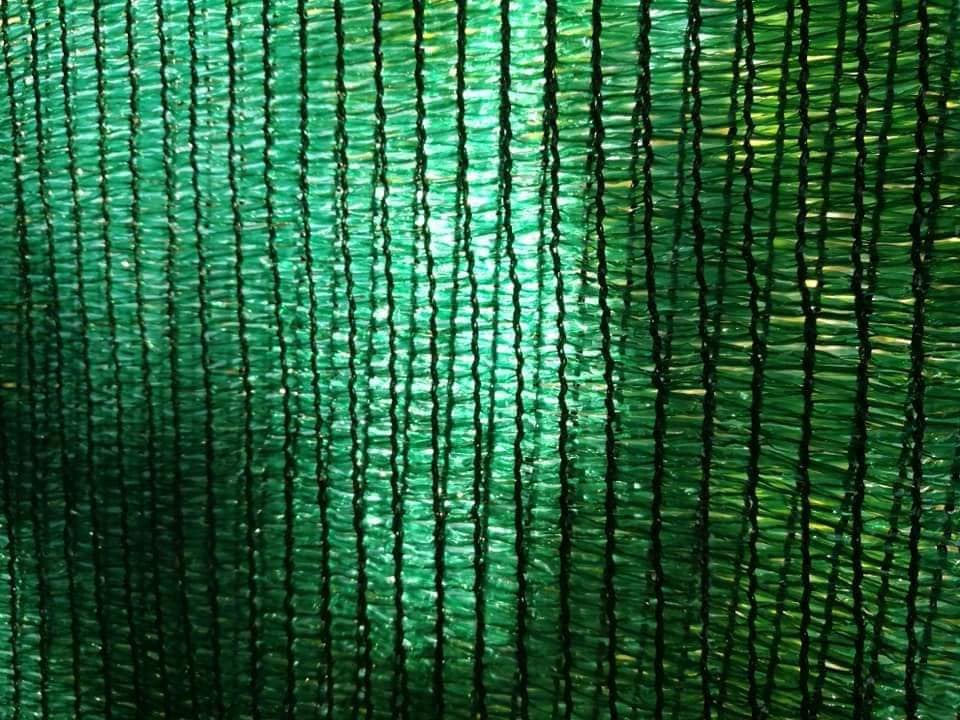
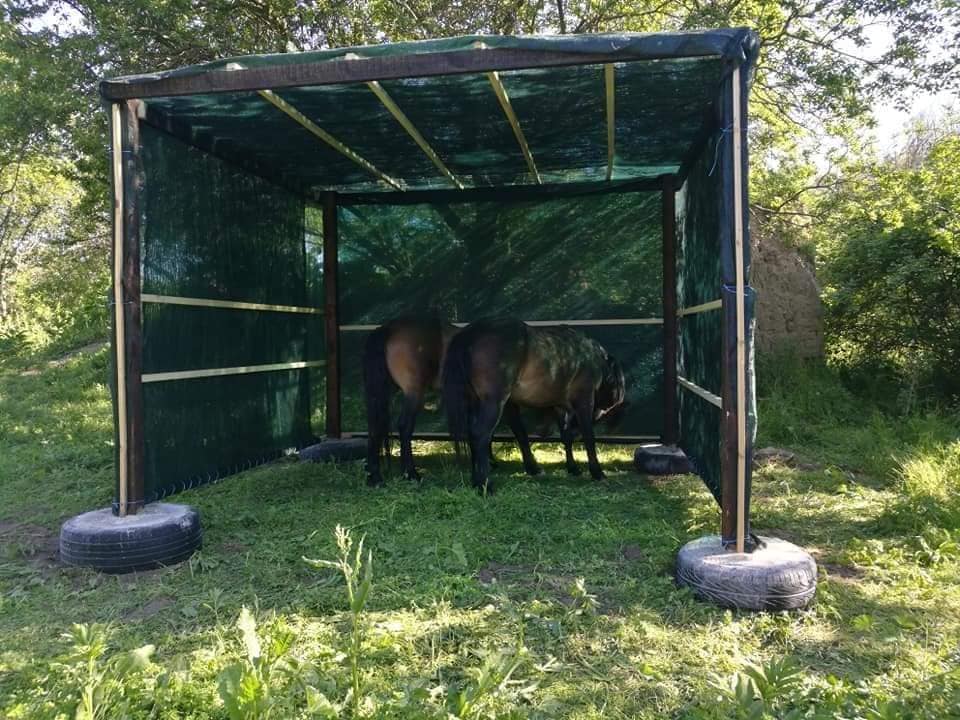
Emergency measures for anyone who doesn’t have shade with the coming heatwave.
Ask a tyre depot for old tyres. Garden centre, grab four long posts, a tarp big enough to cover the top or top and sides and four bags Postcrete.
In the field where you want shade, put a feed sack in the base of a tyre to stop the Postcrete from seeping out, put a post in the centre, have a friend hold it in position, make up the Postcrete and pour in. You can lie them down and roll to move with a bit of grunt.
Once set, use bailing twine to tie shade cloth over the top of the four uprights. You could also tie some to the sides. Basic field shade. Non-permanent, quick, cheap, effective.
In the photos, you can see more frame on mine because it’s a bit more elaborate, but you get the idea, make a rough version. It will take a couple of hours.
If you like the idea, please feel free to share.
Extra Tips
- Offer extra succulents, carrots, pears, apples, beetroot, watermelon, oranges, and a few seedless grapes…in moderation, of course.
- Add fruit skins or peelings to water buckets. The flavour should encourage a little extra drinking.
- Add extra water to feeds (all feeds should be damp anyway).
- Put haynets and feed out in the shade. If your horse has shade in the field, he’s better out than in; standing still inside can make them hotter and induce a sleepy state, which can easily deteriorate into heatstroke.
- If your equine must be inside, make sure ventilation is cleared, stables should be ventilated on more than one side to circulate air, whether its a window, doorway, airbrick, whatever. For stables that have glass windows, cover the pane with a wet cloth (light rug/towel etc will do fine) as glass will increase heat.
The information offered in this article is not intended to replace individual medical advice. If in doubt, follow medical advice as given by your doctor or vet.


